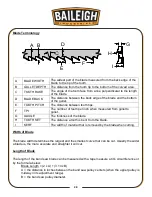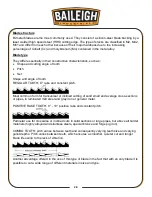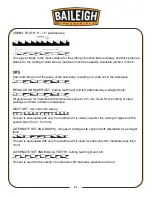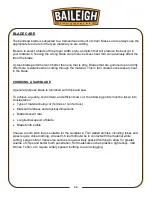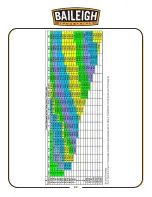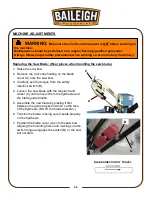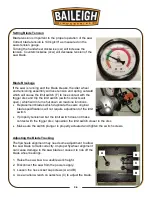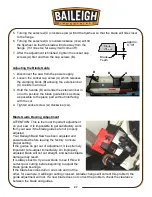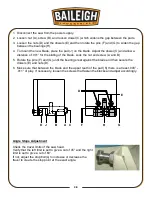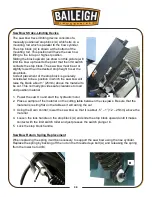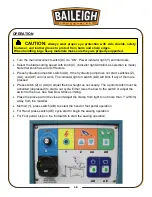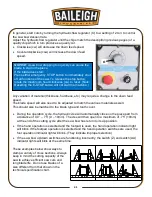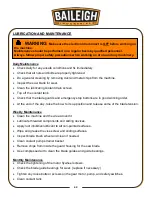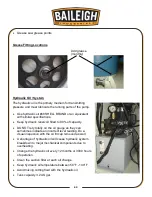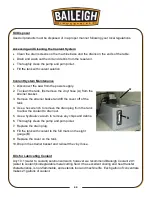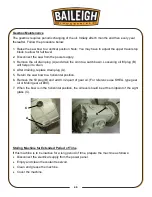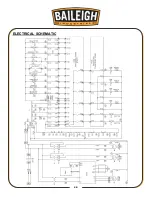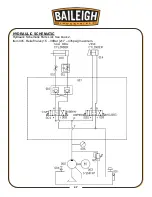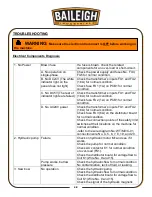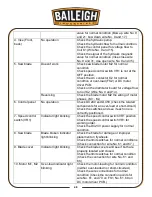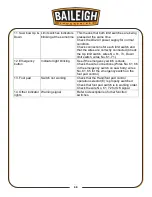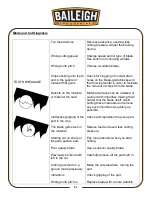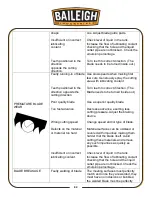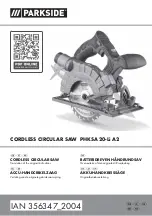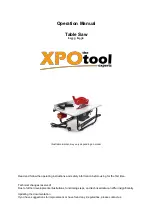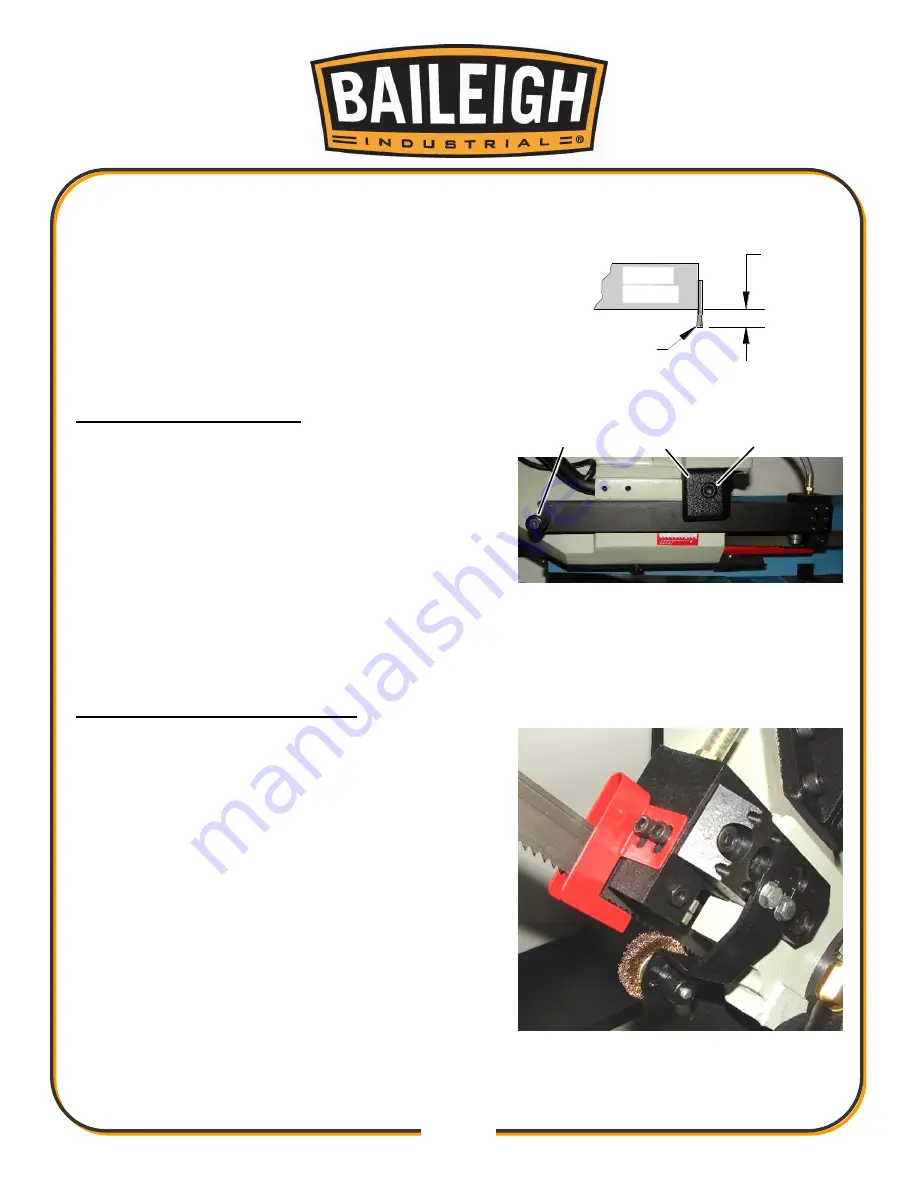
37
37
0.19"
approx.
Blade
Wheel
Blade
Teeth
5. Turning the setscrew (C) clockwise (cw) will tilt the flywheel so that the blade will ride closer
to the flange.
6. Turning the setscrew (C) counterclockwise (ccw) will tilt
the flywheel so that the blade will ride away from the
flange. (If it rides too far away it will come off).
7. After the adjustment is finished, tighten the socket cap
screws (A) first and then the cap screws (B).
Adjusting the Blade Guide
1. Disconnect the saw from the power supply.
2. Loosen the socket cap screw (A) which releases
the clamping block (B) allowing the extension bar
(C) to slide in and out.
3. Hold the handle (D) and slide the extension bar in
or out to position the blade guide block as close
as possible to the piece part without interfering
with the cut.
4. Tighten socket screw (A) clockwise (cw).
Blade Guide Bearing Adjustment
ATTENTION: This is the most important adjustment
on your saw. It is impossible to get satisfactory work
from your saw if the blade guides are not properly
adjusted.
Your Baileigh Band Saw has been adjusted and
power tested before leaving the factory to insure
proper setting.
If the guides do get out of adjustment, it is extremely
important to re-adjust immediately. An improperly
adjusted blade will not cut straight, and serious blade
damage may result.
It is always best to try a new blade to see if this will
correct poor cutting before beginning to adjust the
blade guide bearings.
If the blade becomes dull on one side and not the
other, for example, it will begin cutting crooked. A blade change will correct this problem; the
guide adjustment will not. If a new blade does not correct the problem, check the clearance
between the blade and guides.
A
B
D
C
Summary of Contents for BS-350SA
Page 17: ...14 14 OVERALL DIMENSIONS...
Page 18: ...15 15 GETTING TO KNOW YOUR MACHINE I H G F E D C B A T P O Q S M N U L R V J K T...
Page 36: ...33 33...
Page 49: ...46 46 ELECTRICAL SCHEMATIC...
Page 58: ...55 55 NOTES...
Page 59: ...56 56 NOTES...







